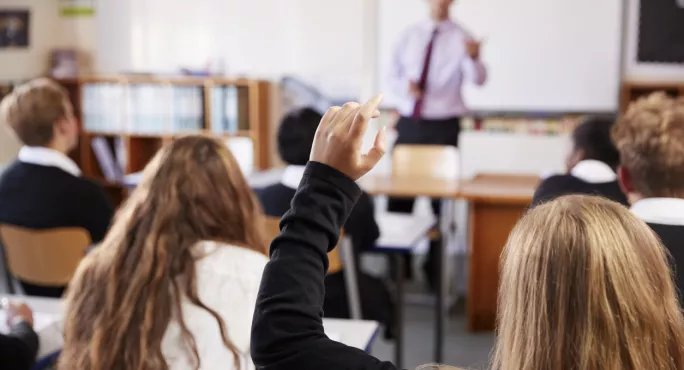- Home
- Teaching & Learning
- Primary
- Why I’ll be keeping my desks in rows, even after Covid
Why I’ll be keeping my desks in rows, even after Covid

Since qualifying as a primary school teacher, I have always had group tables in the classroom. It has just been the done thing.
When I was training, the message given to us was that children learn more effectively around tables in a group arrangement as they can communicate and collaborate with each other.
And so, obviously, that is how I set up my classroom.
Of course, Covid has changed all of that. As part of the coronavirus guidance, the Department for Education recommended to schools that they use classroom seating arrangements with “with forward-facing desks” in order to lessen transmission of the virus.
So, since September, my classroom has ditched groups and instead has been configured in rows.
Classroom seating arrangements: why rows are best
And yet, even though things are slowly going back to normal, my tables are staying in a row formation. Why? Quite simply, rows are great in primary, and this is why:
1. All eyes on me
Using rows, every single child in the class can see me at all times.
This sounds obvious but it was only when moving to rows that I fully realised that when children were sitting in group configurations, there would often be children who had to twist and contort their body so they could see me teach. Now, they just look forward and there I am.
2. Behaviour has improved
There is something very calming about a classroom with rows. I have found that the children are more settled and more easily able to ignore distractions.
In Reception and key stage 1, we often have carpet time with children sitting in rows and the children respond positively in an engaged and focused manner. So it makes sense that we see the same learning behaviours being applied to table rows.
3. Purposeful discussion
One of the main reasons why primary school teachers have commonly had group configurations in the classroom is due to the fact that this arrangement supposedly promotes collaborative working.
Before Covid, I thought this wouldn’t be possible with rows. Now I hold my hands up and realise how wrong I was. If anything, rows have actually enhanced classroom discussion.
This is because rows enable easy partner talk. Due to the table layout, the adults in the room can ensure that the talk is purposeful and on-task rather than a chat about what’s for lunch. Whole-class discussions are equitable with all children getting a fair look in. The front-facing layout means children are looking at the teacher rather than each other and this has given quieter children more confidence to raise their hand and participate in the discussion.
4. Easy navigation
Primary school tables are small but deceptive. You know you’re a primary school teacher when you arrive home with legs covered in bruises from bumping into the corners of little tables all day long. But the good news is that rows have reduced the bruises! A layout of rows with an aisle down the middle of the classroom means less bruises and easy access to all of the children.
It also means every child in the class is able to have the same level of access to their teacher, which is surely most important. In my last classroom, there was one corner of the room that was impossible to navigate when tables were in a grouped layout. It was like climbing Everest getting to the two children who sat there.
So even when the guidelines don’t require it and my classroom slowly goes back to normal, this primary school teacher will be keeping the rows, and I implore you to think about whether you should do the same.
Emma Cate Stokes teaches and leads key stage 1 at a primary school in East Sussex. She tweets from @emmaccatt and blogs at emmacateteaching.com
Register with Tes and you can read two free articles every month plus you'll have access to our range of award-winning newsletters.
Keep reading with our special offer!
You’ve reached your limit of free articles this month.
- Unlimited access to all Tes magazine content
- Save your favourite articles and gift them to your colleagues
- Exclusive subscriber-only stories
- Over 200,000 archived articles
- Unlimited access to all Tes magazine content
- Save your favourite articles and gift them to your colleagues
- Exclusive subscriber-only stories
- Over 200,000 archived articles
topics in this article



